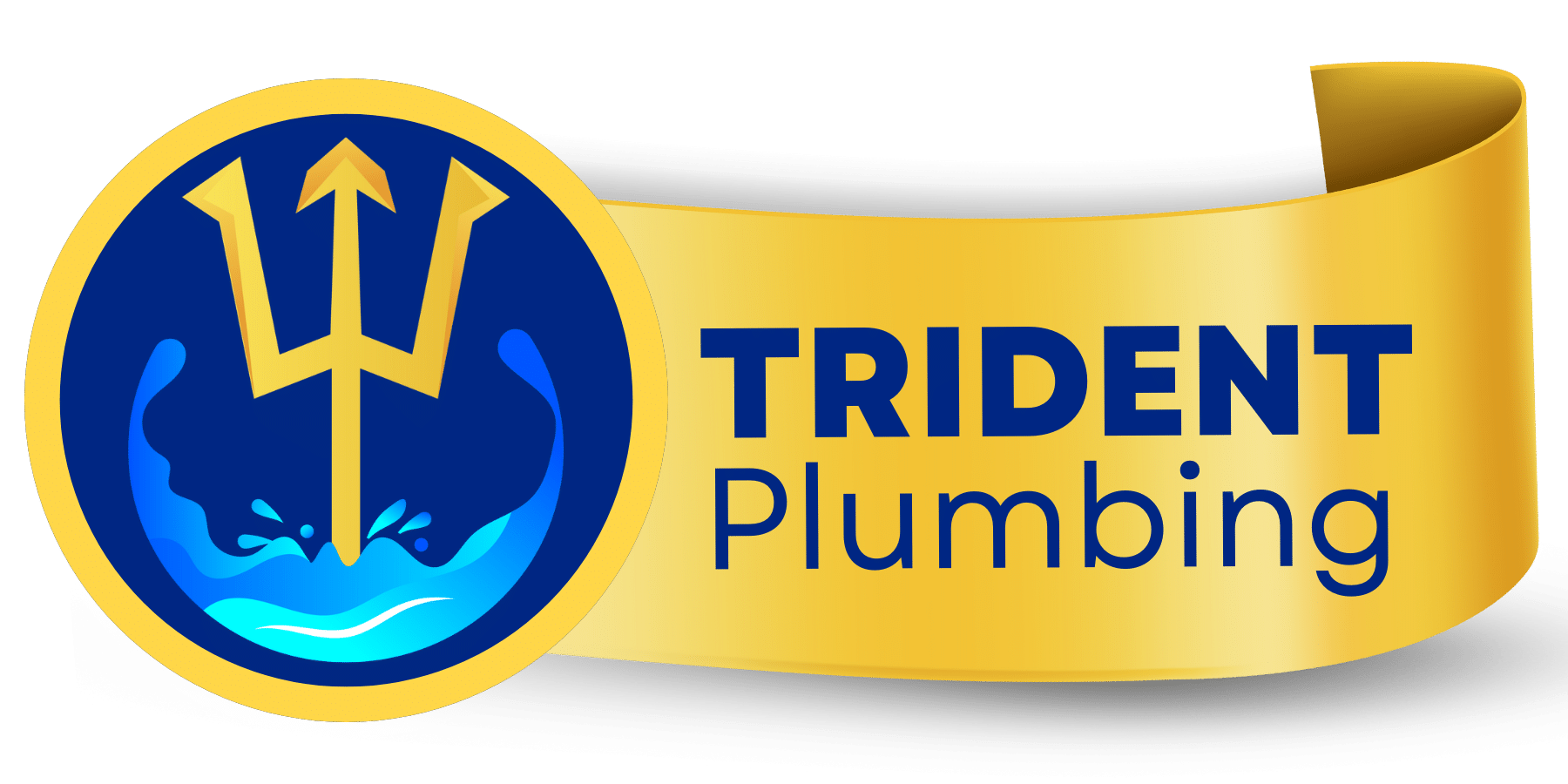Reverse osmosis (RO) is by far one of the most effective water treatment options available. Using a semi-permeable membrane, contaminants and minerals are removed from the water and pretty much only pure water is dispensed. The overwhelming majority of RO installations in homes are under the sink point-of-use systems. So, if reverse osmosis is so effective at filtering water, why would it not make sense to have a whole house RO system installed? Here at Trident Plumbing we do not recommend whole house RO systems, and we do not install them. To better understand why, let’s first dive into how a smaller point-of-use reverse osmosis system works.
How Point-of-Use Reverse Osmosis Systems Work

Point-of-Use RO systems are installed under a sink in your home, and they dispense water through a dedicated smaller faucet. As you can see in the picture above, there are a number of components to an RO system.
- Pre-Treatment: First, the incoming water is filtered to remove any larger minerals or contaminants that could damage the very delicate reverse osmosis membrane.
- Reverse Osmosis: Incoming water is then treated by use of a very fine semi-permeable membrane with a pore size of only 0.0001 microns. Treated water that filters through the membrane continues through the system, and at this stage wastewater is also created containing the filtered out contaminants. This wastewater is removed via the drain at the existing sink.
- Post-Treatment: Water filtered by reverse osmosis tends to be very acidic. At this stage, water is neutralized to correct the pH.
- Storage Tank: Reverse osmosis is a relatively slow process, so the filtered water is stored in a holding tank under the sink until you’re ready to use it.
- Dispenser Faucet: Water from an RO system is almost entirely pure water, which means it will tend to leach metals out of piping and faucets. For this reason, dispensers for RO systems always need to be lead free.
What Would A Whole House Reverse Osmosis System Look Like?
A whole house RO system is going to work just like a point-of-use system, but on a much larger scale.
- Pre-Treatment: Full size filters would need to be installed to first remove any larger contaminants that could damage the RO membrane.
- Reverse Osmosis: A much larger RO unit would need to be installed. Referring back to the point-of-use systems, remember that wastewater is created during the RO process. On average, a whole house RO system would waste 2 gallons of water for every gallon of filtered water produced.
- Post-Treatment: An acid neutralizer would need to be installed to correct the pH of the acidic water produced by the RO system.
- Storage Tank: In order to produce enough water to use throughout your home, a 200-500 gallon storage tank would need to be installed. A pump would also be needed to move the water throughout your home.
- UV Light: Water that is sitting in the holding tank should be treated with a UV light before it is used in your home.
- Beware of Corrosion: Any metal in pipes, fixtures, or appliances is likely to begin to corrode. These metals will also be leached into the water you drink.
Whole House Reverse Osmosis: The Negatives Outweigh the Benefits
We do not recommend whole house reverse osmosis water treatment in your home, and we do not install these systems.
- For a whole house, these systems go far beyond what is needed to provide your family with safe, filtered water. There are a variety of water treatment options that we do recommend, including point-of-use reverse osmosis systems that provide excellent quality drinking water at one fixture.
- The cost of installation for all of the necessary components is incredibly high. With pre-treatment filters, a post-treatment acid neutralizer, the storage tank and pump, a UV light system, and the actual reverse osmosis filter the cost is extreme.
- Expensive maintenance will also be an issue. Maintenance is required for each of the components in the system, and the reverse osmosis membranes alone are costly.
- Corrosion caused by the water from a reverse osmosis system can cause damage to pipes and fixtures throughout your home. This not only leads to expensive repairs, but also concerns about the metals that end up in your drinking water.
Better Options Are Available
Whatever water quality concerns you have, we have solutions that are effective, reasonable, and far more affordable. We would love to have the opportunity to provide a free water test and estimate for water treatment tailored to the water in your home.


